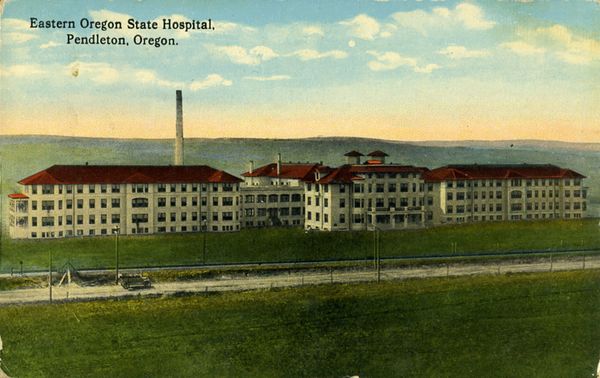Difference between revisions of "Portal:Featured Image Of The Week"
From Asylum Projects
M-Explorer (talk | contribs) |
M-Explorer (talk | contribs) |
||
| Line 1: | Line 1: | ||
{{FIformat | {{FIformat | ||
| − | |Image= | + | |Image= Eastern Oregon State Hospital Pendleton OR 1915.jpg |
|Width= 600px | |Width= 600px | ||
| − | |Body= | + | |Body= [[Eastern Oregon State Hospital]] was created by statute in 1909 and formally opened in Pendleton, Oregon in January 1913. The functions of the hospital were to diagnose mental illness, provide treatment, and release patients who had satisfactorily responded to treatment; to investigate patients admitted and their family histories to determine the cause of a person's mental illness; to provide for humane custodial care to those for whom curative treatment was ineffective; to manage social and recreational programs for patients; to utilize patients for the maintenance and upkeep of buildings and grounds; and to assist in the protection of the patient's financial and business interests. |
}} | }} | ||
Revision as of 05:55, 13 August 2023
Featured Image Of The Week
Eastern Oregon State Hospital was created by statute in 1909 and formally opened in Pendleton, Oregon in January 1913. The functions of the hospital were to diagnose mental illness, provide treatment, and release patients who had satisfactorily responded to treatment; to investigate patients admitted and their family histories to determine the cause of a person's mental illness; to provide for humane custodial care to those for whom curative treatment was ineffective; to manage social and recreational programs for patients; to utilize patients for the maintenance and upkeep of buildings and grounds; and to assist in the protection of the patient's financial and business interests.
